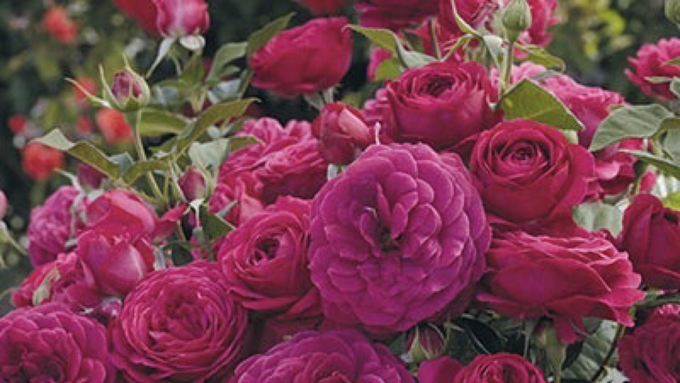
Participate in national Roses in Review survey

Celestial Night, a popular new floribunda rose, is a prolific bloomer. It's on the Roses in Review list this year. Courtesy Spring Hill Nurseries
The American Rose Society invites gardeners coast to coast to take part in Roses in Review, a national survey to rate newly introduced rose varieties.
This is the 97th time that rose growers have participated in Roses in Review, one of the oldest active volunteer gardener efforts of its kind. The results are compiled into the ratings used in the ARS handbook and for rose recommendations. That means your observations will help rose growers choose what to plant in their own gardens for generations to come.
Anyone who grows roses can participate. Not all roses are rated every year – there are too many! (Thousands of roses have ratings.) Instead, the roses on the review list are mostly new varieties or ones that had not yet been rated but are becoming known to a wider audience. Most first hit nurseries in 2018 or later.
Among the roses on this year’s review list: Celestial Night, a purple floribunda with very full blooms (and lots of them).
Deadline is 5 p.m. Sept. 26. The survey is conducted online at www.rose.org. That’s also where you’ll find the list of candidates.
Comments
0 comments have been posted.Sacramento Digs Gardening to your inbox.
Sites We Like
Garden Checklist for week of April 14
It's still not warm enough to transplant tomatoes directly in the ground, but we’re getting there.
* April is the last chance to plant citrus trees such as dwarf orange, lemon and kumquat. These trees also look good in landscaping and provide fresh fruit in winter.
* Smell orange blossoms? Feed citrus trees with a low dose of balanced fertilizer (such as 10-10-10) during bloom to help set fruit. Keep an eye out for ants.
* Apply slow-release fertilizer to the lawn.
* Thoroughly clean debris from the bottom of outdoor ponds or fountains.
* Spring brings a flush of rapid growth, and that means your garden needs nutrients. Fertilize shrubs and trees with a slow-release fertilizer. Or mulch with a 1-inch layer of compost.
* Azaleas and camellias looking a little yellow? If leaves are turning yellow between the veins, give them a boost with chelated iron.
* Trim dead flowers but not leaves from spring-flowering bulbs such as daffodils and tulips. Those leaves gather energy to create next year's flowers. Also, give the bulbs a fertilizer boost after bloom.
* Pinch chrysanthemums back to 12 inches for fall flowers. Cut old stems to the ground.
* Mulch around plants to conserve moisture and control weeds.
* From seed, plant beans, beets, cantaloupes, carrots, corn, cucumbers, melons, radishes and squash.
* Plant onion sets.
* In the flower garden, plant seeds for asters, cosmos, celosia, marigolds, salvia, sunflowers and zinnias.
* Transplant petunias, zinnias, geraniums and other summer bloomers.
* Plant perennials and dahlia tubers for summer bloom.
* Mid to late April is about the last chance to plant summer bulbs, such as gladiolus and tuberous begonias.
* Transplant lettuce seedlings. Choose varieties that mature quickly such as loose leaf.